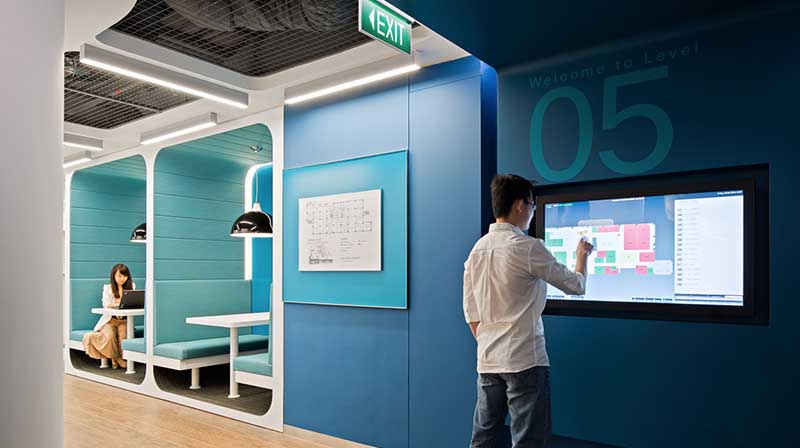Concept of Smart Space
We can define consider smart space as a digital or physical environment in which humans and technology incorporated systems interact in an increasingly open, connected, coordinated, and smart ecosystem. It provides an environment that is equipped with audio sensing and visual systems that can respond to people without having them to wear any particular type of equipment.

Smart spaces are developed on several technologies like vision, facial expression, gesture recognition, dynamic solution, performance animation, and audition. A suitable example of smart space is smart homes or connected home that helps improve efficiency, security, and entertainment. There are other fields also where there is a massive utilization of smart space like hospitals, airports, grocery stores, and apartment buildings.
The popular segments of the smart spaces:
1. Smart Homes
Smart homes are developed on the notion of including smart technologies into residential spaces that aim to improve the quality of life. The advent of this concept is a beneficial solution for major concerns towards emerging segments viz. energy consumption and environmental impacts. Besides, smart homes give constant monitoring and controlling for the patients.
Smart homes are capable of monitoring the behaviors of residents and activities via sensors and actuators utilized throughout the unit. Smart homes play a major part in changing the future cities on the basis of their explored potentials and benefits. The major potential of smart homes in automation and digitalization of living environments and the incorporated technological units is widely recognized.
2. Smart Offices
With an evolving workforce, new trends of work, and different work types, a new type of technology-driven office building is emerging that is responding to the limitations of the next-decades workplace. Smart offices have evolved gradually, from the main aim of handling costs through managing environmental influence, to handle the complete user experience in the workplace.
It is necessary to directly manage the requirements and aspirations of the working class because the trends of work and behaviors of the working people are changing. Due to this factor, it becomes essential to fund heavily in and possess office buildings that are appealing in the times to come and advantage from its good reputation.
3. Smart Buildings
Latest technologies like the Internet of Things (IoT), Big Data, and intelligent Building Management Systems (iBMS) are modifying the way in which new buildings are developed and designed. Advanced utilization of data and analytics, smart buildings simplify interactions, sharing of knowledge, and improve the performance of a business. Furthermore, smart buildings allow superior, more effective utilization of space and environments that aid companies to obtain the maximum from their employee. Another advantage of smart buildings is that they bring a healthy environment and provide technology that can allow and assess wellbeing, aid in lowering down the costs of sickness and absenteeism.
Limitations of smart spaces
A smart space should be capable of providing the facilities for a user, device, and application to conform with several security means, e.g. ID, password, public key exchange, biometrics, etc. Authentication is required before different kinds of interactions.
- The mentioned applications are presently being taken care of by the growing technological prowess. We wish that technological development will overcome the challenges confronted by smart homes in the next few years.
- A smart space must ensure the privacy and integrity of (shared) information. First, information about the units attached to the smart space has to be secured while sending from an information provider to an information consumer. Second, space should provide solutions that stop unauthorized corruption of transmitted information. Third, privacy is of the highest importance; information about persons and their inclinations/behaviors in the smart space is to be secured.
- A smart space should be able to regulate the accesses of appliances and associated authorizations. Hence, when a user or application tries to access a smart space, space should understand that the requester has access to information or an appliance in question.
- A smart space should offer the means of auditing the utilized security protocols and the attained security levels of applications and space itself.
Conclusion:
Smart space refers to a native and simple way to gain access to important data regarding the meetings and events business management. Smart space is considered as a native environment that is incorporated with audio & visual sensing systems that can observe & respond to people.
Due to the potential applications of smart homes in various industries, the smart space industry will thrive more in the next few years. Various segments of smart space have been discussed in this article viz. smart homes, smart offices, and smart buildings.
Comments